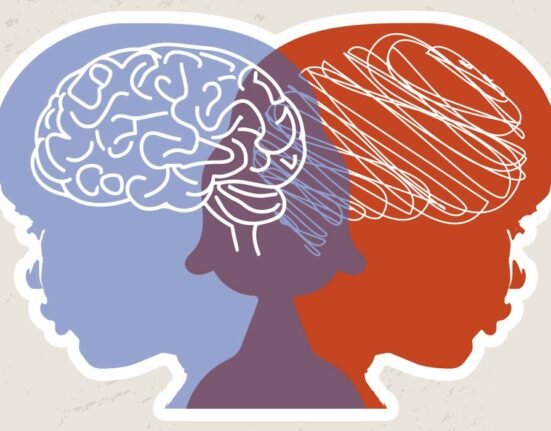Attention-Deficit/Hyperactivity Disorder (ADHD) is far more than a collection of “behaviour problems.” It’s an intricate neurodevelopmental disorder with profound, deep roots in particular differences in brain form and functioning.
American Psychological Association defines ADHD as a behavioral syndrome characterized by the persistent presence of six or more symptoms involving (a) inattention (e.g., failure to complete tasks or listen carefully, difficulty in concentrating, distractibility) or (b) impulsivity or hyperactivity (e.g., blurting out answers; impatience; restlessness; fidgeting; difficulty in organizing work, taking turns, or staying seated; excessive talking; running about; climbing on things).
The symptoms, which impair social, academic, or occupational functioning, start to appear before the age of 7 and are observed in more than one setting. ADHD has been given a variety of names over the years, including the still commonly used attention-deficit disorder (ADD). Systematic investigation of ADHD’s neurobiological origins is indispensable for some compelling reasons.
Debunking Myths
For starters, it helps to debunk ingrained myths. ADHD has nothing to do with lack of discipline or bad parenting. Years of studies, including those by Jay N. Giedd (2019), consistently demonstrate abnormalities in the structure and function of the brain, and most notably the frontal-striatal circuits. Such circuits are vital for attention, decision-making, and controlling impulses. Knowing ADHD as an actual neurodevelopmental disorder with an inherent biological basis de-emphasises stigmatising misconceptions and encourages empathy and a better response towards victimised individuals.
1. Common Misconceptions About ADHD
One common myth about Attention-Deficit/Hyperactivity Disorder (ADHD) is that it results from poor parenting or a lack of discipline. This misconception persists despite strong evidence that ADHD is a highly heritable neurodevelopmental disorder with complex genetic and neurobiological underpinnings. Twin and family studies consistently demonstrate high heritability rates, ranging from 70–80% (Faraone & Larsson, 2019). Neuroimaging research further shows atypical functioning in brain regions related to attention and executive control, such as the prefrontal cortex and striatum (Cortese et al., 2012). Thus, ADHD cannot be reduced to environmental failings but reflects a clinically validated medical condition.
Another widespread myth is that ADHD only affects children and that individuals “outgrow” it in adolescence. While symptoms may change across developmental stages, longitudinal research shows that up to 60% of children with ADHD continue to meet diagnostic criteria or experience impairing symptoms into adulthood (Biederman et al., 2010). Adult ADHD often presents differently, with difficulties in organisation, time management, and sustaining attention rather than overt hyperactivity. Misunderstanding ADHD as a childhood-limited disorder contributes to underdiagnosis and inadequate treatment in adults, perpetuating stigma and barriers to care.
Read More: 10 Popular Misconceptions on Mental Illnesses
Optimising Treatment and Diagnosis
In addition, an extensive understanding of the neurobiological foundation of ADHD enables clinicians to individualise interventions more effectively. As an illustration, imaging research has established that compromised dopamine signalling underlies inattention and impulsivity, and these findings are directly applicable to the design of medication-based treatments that involve modulating neurotransmitter availability or efficacy. Shifting away from a “one-size-fits-all” prescription, treatment options can now be defined by one’s own neurobiological template, with the hope of fewer side effects and more effective symptom control.
Breaking New Ground with New Therapies
With a sense of how brains with ADHD take in, process, and transmit information differently. New therapeutic approaches beyond conventional pharmacology are also made possible. Cognitive training, for example, can be tailored to make neural circuits related to attention more efficient. Equally, motivational aspects need to be enhanced through interventions, as reward systems do not work effectively in people with ADHD (Bush, 2009). Emerging treatments such as neurofeedback even allow people to become their own brain masters, helping them develop new habits and coping skills by utilising the brain’s inherent plasticity.
Finally, studies on ADHD serve not only the individuals who are diagnosed but also our broader knowledge of human thinking and behaviour. By studying where neurological functions fail, we appreciate all the more the exemplary engineering of the brain and attentional and self-regulation mechanisms in all people. This research provides a foundation for progress in mental health and overall well-being.
Read More: Self-regulation Tips for People with Anxious Attachment
Central Brain Structures: Mapping Differences in ADHD
ADHD is invariably associated with unique structural variations in key brain areas, all of which sum to equal its traditional symptoms. Frontal lobes, for instance, play a central role in executive function tasks like planning, working memory, and impulse control. Again and again in the literature, thinner cortical thickness and lower overall volume in the frontal lobes of those with ADHD are reported, showing a late cortical development trajectory (Fatemeh Dehghani Firouzabadi et al., 2021). In particular, the left ventral frontal cortex and the right prefrontal cortex will tend to have a smaller surface area, which may affect attention and control of behaviour.
1. Beyond the Frontal Lobes: Other Key Regions
The basal ganglia, as well as specifically the striatum, are also essential for controlled action and suppression of impulses. Neuroimaging illustrates structural and functional connectivity disruption in the brains of ADHD subjects within this area that may be accountable for hyperactivity and impulsivity (De La Fuente et al., 2013). It might be expressed as having a hard time sitting still, fidgeting regularly, or blurting out the answers. Additionally, the corpus callosum, which is a dense bundle of nerve fibres that ensures interhemispheric communication, is typically abnormal.
These differences may interfere with the effective transmission and integration of information between the two hemispheres of the brain and affect general cognitive processing and coordination. Alterations in the temporal lobes have also been associated with challenges in the processing of auditory information, i.e., the suppression of background noise, and feeling for time (Fatemeh Dehghani Firouzabadi et al., 2021). This may result in extreme challenges in managing tasks and meeting deadlines. It must be remembered that ADHD is a spectrum condition, and the precise anatomical discrepancies will differ from person to person, showing the many different ways in which the condition can present itself.
Read More: Research Shows Our Food and Money Habits as Signs of Impulsivity
Neuroanatomical Findings: What Imaging Studies Show
1. Structural Brain Differences in ADHD
Neuroimaging research has established strong evidence of definite neuroanatomical differences between ADHD brains and neurotypical brains. Structural imaging methods such as Magnetic Resonance Imaging (MRI) consistently show less cortical thinning. Total volume in crucial areas such as the frontal lobes, basal ganglia, and corpus callosum is decreased, indicating a developmental lag typical of ADHD. More precisely, the left ventral frontal cortex, right prefrontal cortex, medial temporal lobes, and caudate nuclei typically demonstrate smaller surface areas or decreased volumes (Fatemeh Dehghani Firouzabadi et al., 2021). Minor architectural differences can significantly impact how people process information and respond to their environment.
Read More: The Anterior Temporal Lobe in Social-Emotional Processing and Anxiety
2. Functional Brain Activity and Connectivity in ADHD
Functional neuroimaging methods, e.g., task-based fMRI, disclose abnormal patterns of activation under cognitive tasks. De La Fuente et al. (2013) illustrated how impaired such patterns were associated with problems of attention and executive functioning. As an example, in tasks that require sustained attention or inhibition, ADHD brains can have less or abnormal activity in frontal areas and divergent activity profiles in the basal ganglia than neurotypical brains. Connectivity analyses also identify interrupted communication paths in frontal-striatal networks engaged in response control and behaviour regulation. The interference causes interference with the smooth and appropriate delivery of neural messages.
Read More: When ADHD Goes Undiagnosed in Adulthood
3. White Matter and Subcortical Insights
Disruptions in white matter integrity, which refer to the brain’s “properties,” also associate structural connectivity defects with hyperactivity and impulsivity, the hallmark signs of children with ADHD, as evidence of impaired neural communication (De La Fuente et al., 2013). Current imaging research also highlights the key role of subcortical structures, such as the basal ganglia, in regulating goal-directed behaviour. Vulnerability of these abilities could be a reason for the impulsive nature characterising ADHD (De La Fuente et al., 2013), for instance, being unable to wait one’s turn or engaging in impulsive buying. In conclusion, as neuroimaging continues to report characteristic brain structure and function features for ADHD, remember that no neuroanatomical profile encompasses the disorder in full, attesting to its complexity.
Dopamine Dysfunction: The DAT1 Gene
The dopamine system is a key regulator of the brain’s reward system, motivation, and cognitive function. In ADHD, the system is dysregulated, with the significant genetic effect being tapped from dopamine transporter gene variation (SLC6A3). The SLC6A3 gene is the gene that encodes the dopamine transporter (DAT), which is a protein that brings dopamine back to the neuron from the synaptic cleft and thus controls the quantity of dopamine for receptor activation. When deregulated, this process causes dopamine signalling to be different and thus ADHD symptoms. Let us imagine dopamine as a message and DAT as a “vacuum cleaner” that sweeps up dopamine. In ADHD, this “vacuum” may pull dopamine too quickly, preventing it from effectively transmitting its signal.
1. SLC6A3 Alleles and Dysregulation
Studies suggest that people with ADHD can have lower DAT, particularly with some SLC6A3 alleles. As a case point, the 9-repeat allele predicts diminished expression of DAT and resulting lower clearance of dopamine from synapses. This can have the impact that dopamine stays too long or leaves too quickly, causing an imbalance. This dysregulation has an acute effect on a person’s ability to react to motivational cues and rewards, negatively impacting conditioning processes needed for goal-directed behaviour (Brown & Biederman, 2010).
Read More: Emotional Dysregulation in ADHD: Why Small Triggers Feel Overwhelming & How to Cope
2. Phasic Dopamine Responses and Motivation
The “dopamine transfer deficit” hypothesis suggests that these alterations generate flawed “phasic dopamine responses”—sudden bursts needed to predict rewards. This translates into reduced reward prediction and lower motivation levels (Dichter et al., 2012). As a result, people receive less internal reward for long-term goals, making immediate gratification more appealing and creating a reinforcing cycle.
3. Effects on Impulse Control
In addition to reward processing, dopamine pathology has a significant effect on impulse control, ADHD’s Achilles’ heel. Healthy dopamine circuits govern impulse control; when that system is awry, impulsivity increases, manifesting as difficulty procrastinating, interrupting others, or buying things on impulse. This inherent connection between impaired reward processing and deficits in executive function testifies to the multifaceted nature of ADHD, to the fact that these types of problems are biological, not simply “poor decisions.”
Executive Function Networks: Lifting the Lid on Impairment
Impairment of the brain’s executive function networks is the essence of ADHD, with the prefrontal cortex, basal ganglia, and anterior cingulate cortex. The prefrontal cortex (PFC) is the brain’s master controller of attention, high-level mental functioning, complicated project planning, and decision-making. Neuroimaging studies are likely to indicate reduced activation in the PFC in ADHD brains that accounts for the inability to sustain attention over a period of time, plan multi-step tasks, and successfully allocate time to meet deadlines. Rubia (2018) notes that such network dysfunctions cause cognitive control difficulties, translating into distractibility and impulsivity. It’s like a symphony conductor unable to synchronise the instruments, sometimes resulting in mental chaos. The basal ganglia are also essential, particularly for goal-directed behaviour.
1. Basal Ganglia and Anterior Cingulate Cortex
Dysfunction of the basal ganglia accounts for the typical ADHD behaviours like response inhibition and planning a sequence of behaviour. Evidence indicates basal ganglia structural abnormalities with compromised working memory and compromised control of complex motor responses (De La Fuente et al., 2013). The striatum, which is a component of the basal ganglia complex, is usually the offender in such impairments, with effects ranging from movement control to habit formation.
People with ADHD indicate that they feel frozen by a mental barrier to undertaking tasks, not laziness, but due to planning and initiating being so daunting. The anterior cingulate cortex (ACC) is also in charge of controlling impulses and regulating emotions. Deficits in the ACC elevate impulsivity in ADHD (A.E. Team, 2022), which can result in emotional outbursts, increased frustration, or struggling with responses to slight aggravations.
The dysfunction impacts short-term reactions and long-term decision-making skills, including impulsive actions in frustration that one will later regret. Understanding such differences in functions is essential to creating targeted interventions that will improve cognitive control and global functioning for ADHD patients, resulting in more efficient strategies in everyday life, the workplace, and social relationships.
Read More: How ADHD Affects Emotional Regulation
Biased Time Perception: A Daily Struggle
Perception of time is typically a challenge for ADHD patients, a hurdle that profoundly affects everyday life. Studies show they frequently fail to estimate time intervals accurately, resulting in persistent challenges with task organisation, duty priority, and compliance with deadlines (Mette & Tchounwou, 2023). This challenge includes several particular deficits in different areas, such as motor timing (predicting the length of time an action will take), perceptual timing (estimating a duration), and pre-expectation of temporal occurrences (predicting exactly when something will finish).
For example, ADHD sufferers tend to overestimate time intervals, thinking a minute has elapsed when in fact only 30 seconds have elapsed. This persists into adulthood, causing their internal clock to run too fast or too slow, making daily life very challenging. Neuroimaging has localised specific areas of the brain for these deficits of the sense of time in ADHD individuals.
1. Neural Mechanisms and Dopamine Pathways
The inferior frontal-striato-cerebellar networks, which are typically engaged in coordination and timing, contain defects charted according to the timing deficits seen (Noreika et al., 2013). Additionally, the dopaminergic mechanisms described are essential to good time estimation. Subsequently, medication that targets dopamine receptors like methylphenidate can effectively overhaul such timing issues by restoring the level of dopamine to a standard rate (Weissenberger et al., 2021), demonstrating a clear connection between neurochemistry and this very real, everyday challenge. The effects of disrupted time estimation extend far beyond trivial cognitive delays. Impact behavioural control because timing issues are inextricably linked with impulsivity as well as attentional dysfunction—the signatures of ADHD.
Think of consistently overestimating how long it will take to complete a task, resulting in excessive procrastination, or buying too much because of faulty time or cost estimation. This link suggests that treatments that operate on time perception—maybe through specialised timing training or novel time management techniques—can also decrease a broader range of ADHD symptoms. Understanding how people with ADHD experience and move through time can give rise to more targeted interventions to improve executive function and overall well-being, allowing people to feel more in control of their day.
Impulse Control Challenges
1. Impulsivity and Executive Function
People with ADHD tend to work extremely hard at controlling impulses, yet make poor decisions and can’t resist temptations. This disrupted regulation is associated with neurobiological variations that influence regions of the brain responsible for executive function, specifically those that govern impulses. It is more than simply a matter of not having willpower, but a fundamental variation in how the brain’s “stop” messages operate. For instance, a person with ADHD may act impulsively in school, talk over others a lot, or buy something on impulse without thinking.
This aspect also speaks of the strength of the impulse, which can overpower rational choice even though people know that there are undesirable consequences. Studies have shown that the thalamus plays a key role in achieving this through functioning as a relay to enable communication with the prefrontal cortex, the hub of executive function.
2. Brain Pathways and Emotional Regulation
Disruptions along this pathway, characteristic of ADHD, result in impaired impulse control functions (Lovering, 2023). The “stop” or “wait” message is not getting through to the brain in a clear or quick enough manner. In addition, differences in the amygdala, which is typically smaller in people with ADHD, may also prevent them from controlling impulsivity (Lovering, 2023). Since the amygdala is also responsible for processing emotions, a smaller or poorly regulated amygdala may contribute to emotional impulsivity, like brief bursts of anger or frustration. Neurotransmitter imbalances, particularly in dopamine and serotonin, are a primary cause of these issues.
3. Neurochemical Influences on Immediate Reward
These neurotransmitters are the window to motivation and mood control. Their derangement may cause people to be steered towards immediate reward, maybe even at the cost of disregarding adverse repercussions, hence spurring compulsive behaviour (Green, 2022; Stavraki et al., 2020). Instant gratification is so much more attractive and influential when the reward system is not functioning correctly, as compared to future rewards that necessitate patience and consistent effort over time, and it creates a cycle that is hard to break.
4. Subtypes and Comorbidities
ADHD is different in different forms with different subtypes, like inattentive or hyperactive/impulsive, based on the way impulsivity manifests (Lovering, 2023). Also, comorbid conditions such as Intermittent Explosive Disorder or bipolar disorder can make such behaviour more severe (Stavraki et al., 2020), resulting in a complex combination of symptoms which must be treated cautiously. Understanding all these different facets of impulsivity is critical to designing appropriate, tailored treatments for ADHD patients, more than the mere adjustment of behaviour in an attempt to comprehend covert neurological mechanisms.
New Results from Neuroimaging Research
New advances in neuroimaging have offered solid evidence of colossal structural and functional contrasts of ADHD brains with non-ADHD brains. A broad review of 174 MRI and fMRI studies on more than 24,000 subjects revealed unquestionable contrasts in brain structure involved in attention, inhibition, and executive function (Boon, 2025). This large set of data gives us good evidence, solidifying our confirmation that ADHD is fundamentally based on brain differences.
1. Neural Network Function Deficits
fMRI scans are particularly reflective of neural networks with dysfunctional components in ADHD, encompassing areas essential for inhibitory control and the modulation of attention. In ADHD, there is deficient activation in frontal-striato-thalamic circuits during cognition tasks (Rubia, 2018). These circuits are essential for distraction suppression and for the facilitation of goal-directed behaviour.
2. Diagnostic Potential
Using machine learning on fMRI has reached record accuracy, 92.5%, in diagnosing ADHD patients from being able to analyse very minor patterns of brain activity when patients do reward-related working memory tasks (Rubia, 2018). This level of performance marks a time when diagnostics could be significantly improved by objective brain markers, potentially enabling brain scans to assist in confirming a diagnosis.
3. Default Mode Network (DMN) Dysfunction
There is also evidence of dysfunction in deactivating the Default Mode Network (DMN) in ADHD. The DMN, which is active when the individual is not doing anything, is not deactivated best in ADHD subjects’ brains and therefore results in cognitive impairment (Rubia, 2018). This constant internal activity permits more internal distractions, hindering outside task attention.
4. Interconnectedness of Cognitive Functions
A sample of a recent network analysis in clinically referred adults reveals that there is tighter interaction among neuropsychological functions in ADHD, demonstrating how attentional deficits limit other cognitive facets (Guo et al., 2023, pages 11-15). This conforms to the fact that attention is not isolated but is integrated with memory, processing speed, and affect regulation. These observations cumulatively enrich our knowledge of ADHD’s neurology, guiding both diagnosis and therapy, and illustrating the interrelated character of these brain processes.
Read More: How Therapy Impacts the Way We See Ourselves and Others
The Developing Knowledge of ADHD
1. Neural Network Insights
Neuroscience has revolutionised our knowledge of ADHD, uncovering it to be a multifaceted disorder with unique anomalies in different neural networks. Neuroimaging reveals the brains of those with ADHD have deficits that tend to clump together within fronto-striatal and fronto-parieto-cerebellar networks, critical for inhibitory control and attention (Rubia, 2018).
What this suggests is that ADHD is not one deficit but rather an aggregate of associated problems that all affect several different brain functions simultaneously. It provides a dynamic rather than static view, where, like in a symphony, some elements remain in the background. Some novel discoveries are rivalling the old conceptions, more and more focusing on networks of emotional control, reward and motivation.
2. Emotional Dysregulation and Subtype Variations
Ventral striatum and limbic structures have both been reported to show abnormal activity (Rubia, 2018), which were not explored to the same extent in ADHD research until more recent times. This is important because it brings to the forefront the reality that emotional dysregulation is indeed a key feature of ADHD and directly related to how the brain itself processes reward and emotion regulation.
Such discoveries require a treatment approach that touches on both cognitive and affective impairment simultaneously, given that they are in close neurobiological relationship with one another and focuses on the healing of the individual as a whole. There is also increasing recognition of the importance of investigating other ADHD subtypes outside of the hyperactive-impulsive. Inattentive presentations, for instance, can elucidate particular neurobiological characteristics that need to be further researched (Rubia, 2018).
This fineness of vision recognises that ADHD is not a singular disease; people have and express symptoms in different ways and individually. We need to have more targeted strategies for research and intervention. Generally speaking, with more research being done, we are continually learning more about ADHC and the intricacies and relevance to therapy. And clinical practice is being made more comprehensible. It’s an exciting time to be studying the brain because we are literally making discoveries.
References +
ADDA Editorial Team. (2022). Inside the ADHD Brain: Structure, Function, and Chemistry. https://add.org/adhd-brain/
Ariel B Brown, Joseph Biederman. (2010). Am J Med Genet B Neuropsychiatr Genet. https://pmc.ncbi.nlm.nih.gov/articles/PMC2915441/
Asherson, P., Buitelaar, J., Faraone, S. V., & Rohde, L. A. (2016). Adult attention-deficit hyperactivity disorder: Key conceptual issues. The Lancet Psychiatry, 3(6), 568–578. https://doi.org/10.1016/S2215-0366(16)30032-3
Biederman, J., Petty, C. R., Evans, M., Small, J., & Faraone, S. V. (2010). How persistent is ADHD? A controlled 10-year follow-up study of boys with ADHD. Psychiatry Research, 177(3), 299–304. https://doi.org/10.1016/j.psychres.2009.12.010
Boon. Helen J.. (2025). What do ADHD neuroimaging studies reveal for teachers, teacher educators and inclusive education?. https://psycnet.apa.org/record/2020-04576-001
Christian Mette, Paul B. Tchounwou. (2023). Time Perception in Adult ADHD: Findings from a Decade-A Review. https://pmc.ncbi.nlm.nih.gov/articles/PMC9962130/
Cortese, S., Kelly, C., Chabernaud, C., Proal, E., Martino, A. D., Milham, M. P., & Castellanos, F. X. (2012). Toward systems neuroscience of ADHD: A meta-analysis of 55 fMRI studies. American Journal of Psychiatry, 169(10), 1038–1055. https://doi.org/10.1176/appi.ajp.2012.11101521
De La Fuente. Angelica, Branch. Craig, Li. Xiaobo, Xia. Shugao. (2013). Frontiers | A review of attention-deficit/hyperactivity disorder from the perspective of brain networks. https://www.frontiersin.org/journals/human-neuroscience/articles/10.3389/fnhum.2013.00192/full
Faraone, S. V., & Larsson, H. (2019). Genetics of attention deficit hyperactivity disorder. Molecular Psychiatry, 24(4), 562–575. https://doi.org/10.1038/s41380-018-0070-0
Gabriel S Dichter, Cara A Damiano, John A Allen. (2012). Reward circuitry dysfunction in psychiatric and neurodevelopmental disorders and genetic syndromes: animal models and clinical findings. https://jneurodevdisorders.biomedcentral.com/articles/10.1186/1866-1955-4-19
George Bush. (2009). Attention-Deficit/Hyperactivity Disorder and Attention Networks. https://www.nature.com/articles/npp2009120
Guo. Nana, Fuermaier. Anselm B. M., Koerts. Janneke, Tucha. Oliver, Scherbaum. Norbert Müller. Bernhard W. (2023). Networks of Neuropsychological Functions in the Clinical Evaluation of Adult ADHD. https://research.rug.nl/files/788197008/guo-et-al-2022-networks-of-neuropsychological-functions-in-the-clinical-evaluation-of-adult-adhd.pdf
Ioanna Stavraki, Olivia Guy-Evans, Saul McLeod. (2020). Understanding And Managing Impulsivity In ADHD. https://www.simplypsychology.org/impulsivity-in-adhd.html
Jay N. Giedd. M.D (2019). The Enigma of Neuroimaging in ADHD. https://psychiatryonline.org/doi/10.1176/appi.ajp.2019.19050540
Katya Rubia. (2018). Cognitive Neuroscience of Attention Deficit Hyperactivity Disorder (ADHD) and Its Clinical Translation. https://pmc.ncbi.nlm.nih.gov/articles/PMC5884954/
Nancy Lovering. (2023). ADHD impulsivity symptoms, management, and outlook. https://www.medicalnewstoday.com/articles/adhd-impulsivity
Rachael Green. (2022). Impulsivity in ADHD. https://www.verywellmind.com/adhd-symptom-spotlight-impulsivity-5443083
Simon Weissenberger, Katerina Schonova, Pascal Büttiker, Raffaele Fazio. (2021). Time Perception is a Focal Symptom of Attention-Deficit/Hyperactivity Disorder in Adults. https://pmc.ncbi.nlm.nih.gov/articles/PMC8293837/
Valdas Noreika, Christine M. Falter, Katya Rubia. (2012). Timing deficits in attention-deficit/hyperactivity disorder (ADHD): evidence from neurocognitive and neuroimaging studies. https://pubmed.ncbi.nlm.nih.gov/23022430/
Valdas Noreika, Christine M. Falter, Katya Rubia. (2013). Timing deficits in attention-deficit/hyperactivity disorder (ADHD): Evidence from neurocognitive and neuroimaging studies. https://www.sciencedirect.com/science/article/pii/S0028393212004083













Leave feedback about this